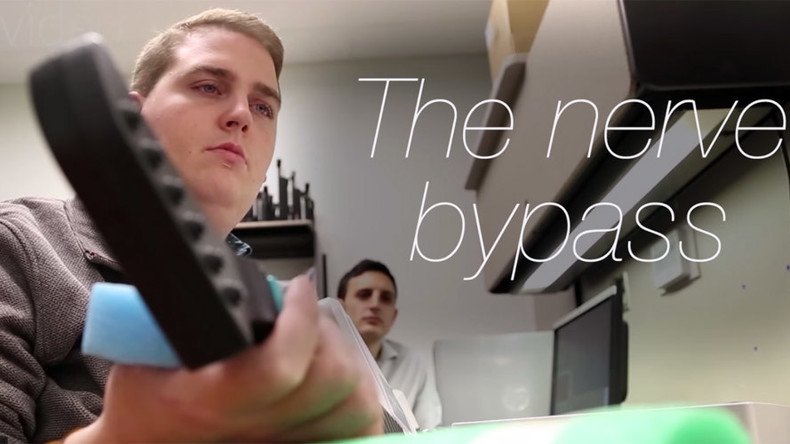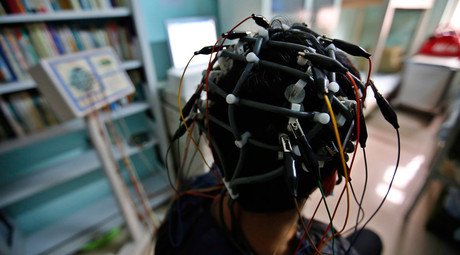Brain implant allows man to control paralyzed arm by thought alone

Thanks to a computer interface linking his brain and arm, a paralyzed man has become the first quadriplegic in history to regain the ability to perform complex hand and finger movements.
Ian Burkhart was paralyzed in a diving accident in 2010, which left him with only limited use of his arms but no movement in his hands and legs.
On Wednesday, however, doctors published a study in the journal Nature that said the 24-year-old had managed to regain control of his right hand and fingers, thanks to a technology called NeuroLife that reads and decodes electrical signals from the brain and send them to his usually non-functioning extremity.
Doctors implanted Burkhart’s brain with a chip in 2014, and with NeuroLink’s help and continuous practice, Burkhart can control his hand and finger movements finely enough to pick up a bottle and pour it out, swipe a credit card and even play a videogame with the movements of individual fingers.
“This study marks the first time that a person living with paralysis has regained movement by using signals recorded from within the brain,” study author Chad Bouton of the Feinstein Institute for Medical Research in Manhasset, New York said in a press briefing. “This is an important result and finding as we try to pave the pathway to helping other patients in the future, patients not only living with spinal cord injury but who have experienced a stroke and maybe traumatic brain injury.”
The machine works by using computer-equipped machine-learning software that records activity in his motor cortex when he thinks of a certain action. The information is then correlated to desire movements, and a sleeve on Burkhart’s right arm stimulates his muscles into action.
Burkhart noted that the abilities that he regained from the system aided him enormously in getting through everyday tasks, and he hopes that the technology is one day used outside of a clinical setting, so that he can live a more independent life – the ultimate goal of the researchers.
“We're hoping that this technology will evolve into a wireless system connecting brain signals and thoughts to the outside world to improve the function and quality of life for those with disabilities. One of our major goals is to make this readily available to be used by patients at home,” Dr. Ali Rezai, co-author of the study and a neurosurgeon at Ohio State's Wexner Medical Center, said in a statement. “Ten years or so ago were not able to do this. Just imagine what we will be able to do 10 years from now.”













